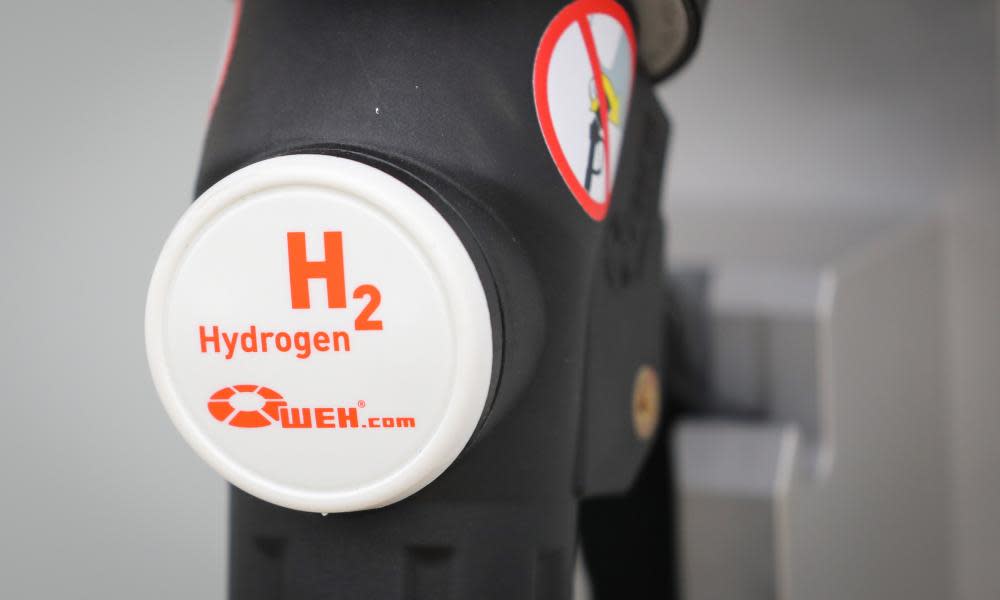Toyota reveals plan to turn trucks into emissions-free 'power plants'

Portable emissions-free “power plants” could soon hit the road under plans by Toyota to fit some of the company’s light-duty trucks with hydrogen fuel cells that can generate electricity.
The world’s second-largest carmaker will begin testing the plan to fit a Toyota Dyna with hydrogen fuel cells in Japan later this month, a move that could create fleets of temporary, mobile electricity sources worldwide.
The specially equipped vans could generate electricity for 72 hours straight and could potentially replace the diesel-fuelled mini generators that typically power outdoor sporting events, concerts and festivals with a zero-emissions alternative. They could also be used to provide emergency electricity to disaster-stricken areas left without power for up to three days before refuelling.
Related: Lithium find in Cornwall spurs hopes of regeneration
Toyota will work alongside the portable generator company Denyo to create the mini power plants, which will be based on the same technology used in the Mirai fuel cell electric vehicle.
Toyota rolled a few hundred Mirais off its production line in late 2014 as its first step into the nascent market for emissions-free hydrogen-powered vehicles.
The fuel cell vehicles run on compressed hydrogen gas, which in the Mirai’s case is stored in two tanks mounted underneath the vehicle. They emit no exhaust fumes, although fossil fuels are used to produce the hydrogen and to pressurise it.
The new fuel cell power system will use equipment developed by Denyo, and subsidised by Japan’s environment ministry, to carry 65kg of hydrogen stored in 27 hydrogen tanks, so it can cover long distances and generate power for long periods of time “with the only emission being water”.
Testing is expected to last until the end of 2021 before a decision can be taken on commercialising the plan. They will face a series of trials that will include supplying power to evacuation shelters and businesses during disaster simulation drills, and tests at outdoor events.
Japan was one of the first countries to adopt a hydrogen strategy to decarbonise its transport system, while many other countries plan to rely more heavily on electrification of road and rail systems. The country had plans to roll out 160 hydrogen refuelling stations ahead of the Tokyo Olympic Games, before reaching about 580 by 2025 and more than 1,300 by 2030.
Toyota’s European hydrogen strategy will focus on larger vehicles and buses to help create scale within the burgeoning industry despite the prevalence of electric cars.


